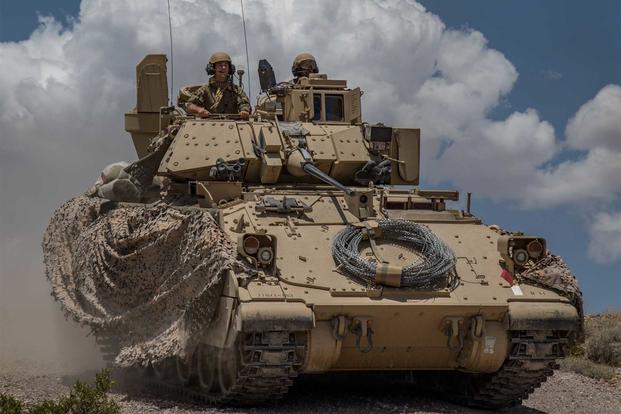The Army is going back to the drawing board for the fourth time on the much-delayed $45 billion program to replace the Bradley Fighting Vehicle, Army Chief of Staff Gen. James McConville said Tuesday.
The service announced last week that the sole-bid contract in place has been canceled.
During a "tactical pause" on accepting bids, "We're going to reset the requirements" as well as "the acquisition strategy and timeline" for the new Optionally Manned Fighting Vehicle, McConville said at an Association of the U.S. Army breakfast held at Fort Belvoir, Virginia.
"And then we're going to come out and aggressively pursue this critical weapons system that we need for the future," he added. The general did not specify how long the tactical pause would last or how long it would take before the Army is ready put out the requirements for industry.
Related: Army Cancels $45 Billion Bradley Replacement Competition After Only One Bid Qualified
In a report last year, the Congressional Research Service said, "The M2 Bradley is considered to have reached the technological limits of its capacity to accommodate new electronics, armor, and defense systems."
McConville said he is working closely with acquisition officials and Army Futures Command to come up with a new set of standards for the Bradley replacement, which will take troops into combat, provide fire support and protect them against enemy vehicles.
He likened the process to football. "They're going to go back in the huddle, they're going to call another play and they're going to come out to the line of scrimmage. And they're going to get after it, and they're going to score a touchdown. So this is going to happen," he said.
The demand for industry will be to "show us that you can actually do this" and also give a solid estimate on "how much time it will take to get to the requirements we need," McConville said.
Bottom line, "we want to drive it before we buy it," he said.
The Bradley has undergone numerous upgrades since it was first fielded in 1981, but the need for a replacement has become one of the Army's top priorities.
The bid cancellation last week was the third time that the service has scrapped a Bradley replacement program. Two previous efforts in 2009 and 2014 were canceled because of projected cost overruns.
The latest attempt faltered when the Army was left with only one bid from General Dynamics. A competing bid from Raytheon and Germany's Rheinmetall was disqualified when Rheinmetall failed to ship a prototype of its Lynx KF41 Infantry Fighting Vehicle to the U.S. by the service's deadline.
When he announced the cancellation of the General Dynamics bid late last Thursday, Bruce Jette, assistant secretary of the Army for acquisition, logistics and technology, said in a statement that the service is fully committed to the replacement program, but added, "It is imperative we get it right for our soldiers."
Despite the setback, McConville said the service is making significant progress on other top priorities in the pursuit of "transformational change" for the force.
He said the Army is "having some early successes at the speed of relevance" in acquiring new systems to deliver long-range precision fires and has had "successful tests of a precision strike missile" able to engage targets at more than 500 kilometers, or about 310 miles. He expects that system to be fielded in the next two to three years, he added.
The service is also making progress on a long-range cannon to hit targets at 70 kilometers, or about 43 miles. McConville said that system should also be fielded in two to three years.
-- Richard Sisk can be reached at Richard.Sisk@Military.com.
Read more: Here's the New Light Machine Gun SOCOM Is Evaluating














